Inquivix HQ
1-903, 18 Eonju-ro 146-gil,
Gangnam-gu, Seoul, Korea
06057
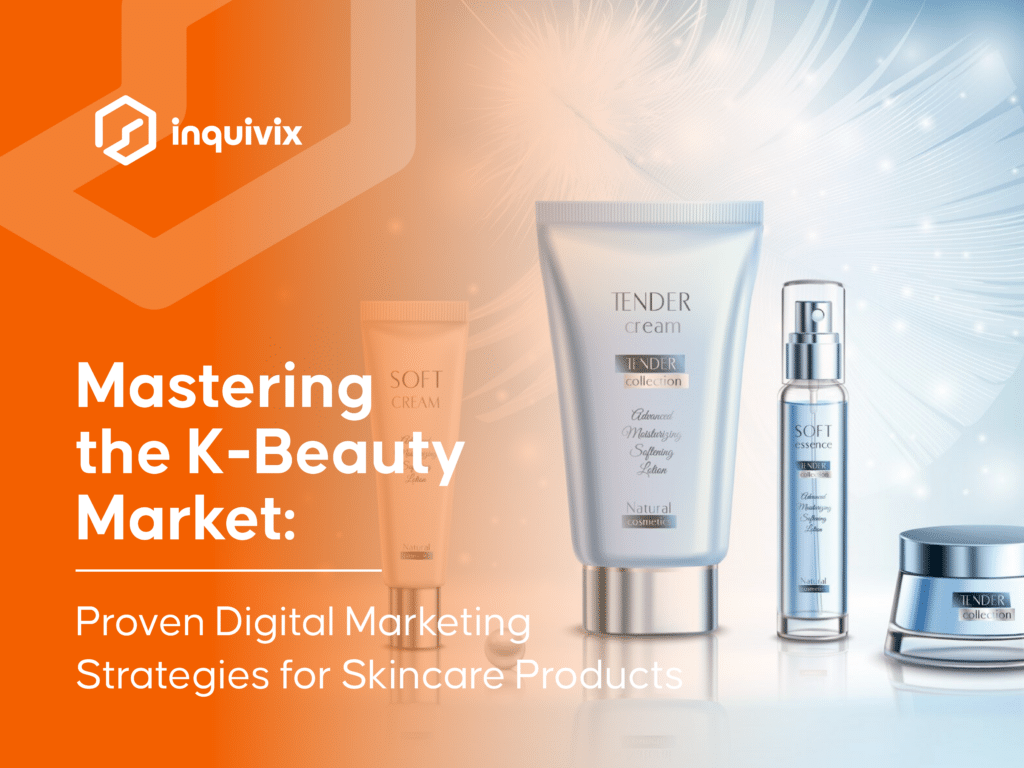
In the constantly evolving beauty landscape, the K-beauty sector stands out, establishing itself as a trendsetter with its pioneering products and methods. The surging demand for impeccable, healthy skin has boosted the K-beauty industry’s growth, making it a lucrative market. This expansion, combined with South Korea’s sophisticated digital environment, has created a challenging yet fertile ground for enterprises seeking to make their mark and expand their operations. To flourish in this intensely competitive market, the role of powerful digital marketing methods cannot be overstated. This blog discusses the Korean skincare industry and the significance of digital marketing within it, in addition to highlighting proven digital marketing tactics for skincare products. Let’s delve into the details.
Understanding the South Korean Skincare Market

South Korea is a nation where beauty and presentation are given considerable importance. Due to exceptionally high beauty standards, the country’s skincare market has emerged as one of the most fiercely contested worldwide. Backed by rigorous research and innovation, the K-beauty industry thrives with its assortment of premium products and competitive price points. The beauty ethos in South Korea follows a “skin-first” ideology, prioritizing preventative skincare measures over temporary fixes provided by makeup.
Trends and Preferences in the South Korean Skincare Industry
A standout characteristic of the South Korean skincare sector is its all-embracing strategy. Unlike many other markets, K-beauty extends its reach to both women and men, recognizing and addressing skincare issues across all genders. Regular appointments with estheticians are culturally normal, and the use of face masks or makeup by men is not uncommon.
K-beauty products frequently feature unconventional, natural ingredients, which significantly deviate from those used in traditional skincare, thus garnering global consumer attention. Furthermore, the swelling demand for cruelty-free cosmetics is influencing the market’s trajectory. Lastly, the quintessential multi-step skincare routines, a signature aspect of South Korean skincare, remain popular, advocating the use of a multitude of products for optimal skin health.
K-Beauty Products Market Share
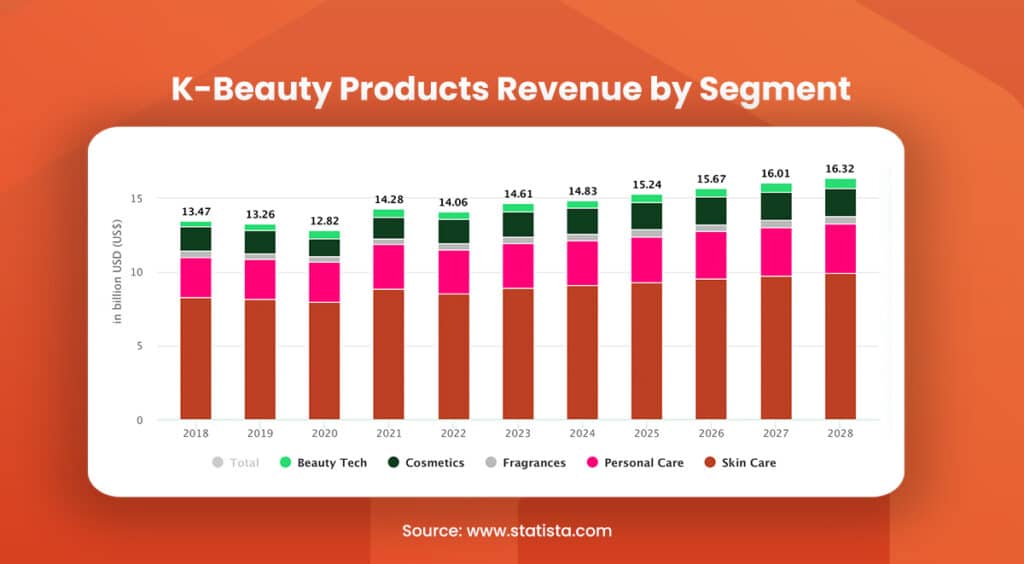
The beauty and personal care market in South Korea is poised to generate a revenue of US$14.61 billion, with a projected annual growth rate of 2.25% extending into 2028. Among the various product categories within the beauty and personal care market, skincare holds the largest portion, anticipating a market volume of US$8.91 billion by 2023. Forecasts suggest that the skincare segment will continue to maintain its majority share in the Korean cosmetic market.
The Role of Digital Media in K-Beauty Consumption
In the vibrant landscape of the South Korean beauty industry, digital media has emerged as an invaluable tool for brand establishment and growth. South Korean beauty products, with their unique approach to beauty and skincare, have found massive popularity on various digital platforms, especially social media. Beyond mere product advertising, these platforms have become arenas for education, interaction, and community building, playing a significant role in shaping consumer preferences and trends.

One key strategy that South Korean beauty brands have effectively employed is leveraging influencers. With their broad reach and personal touch, influencers have the power to champion products on social media, driving both awareness and sales. This strategy goes hand in hand with another crucial tactic: innovation. Bold, creative marketing campaigns that break the mold and capture audience interest can quickly turn a product from unknown to unforgettable.
Keeping up with the rapidly evolving digital landscape requires brands to be responsive to changes and up-to-date with trends. Consumer interactions need to be prompt, informative, engaging, and most importantly, genuine. In addition, education is a key component of the K-beauty industry’s digital strategy. Brands often employ fun, non-selling methods to educate consumers about their products, skincare routines, and overall approach to beauty. This not only increases product visibility but also deepens customer loyalty, reinforcing the brand’s influence on social media.
Tailoring Your Digital Marketing Strategies for South Korea
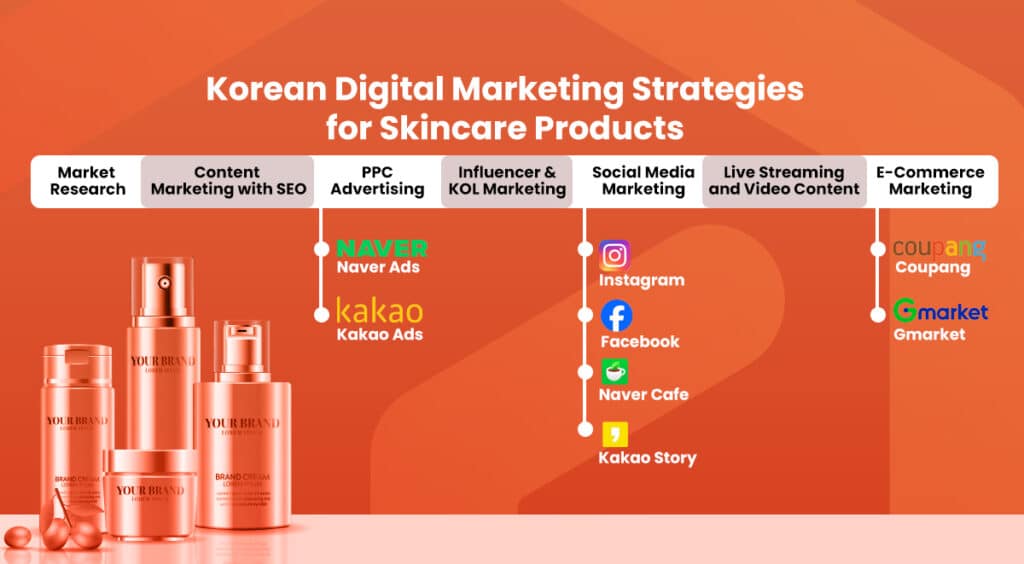
In the ever-changing realm of South Korea’s cosmetic industry, it’s vital to adapt your digital marketing strategies to connect with the local audience and make a lasting impression. The K-beauty sector, renowned for its globally competitive brands, thrives on inventive marketing tactics and a profound comprehension of its customer base. Consequently, it’s critical to utilize market research and data analytics to garner valuable insights into consumer habits and maintain a competitive edge.
Leveraging Consumer Behavior and Data Analytics
In the South Korean beauty market, effective marketing begins with understanding your customers. Utilizing market research and data analytics helps cosmetic companies navigate South Koreans’ unique beauty preferences and needs. It’s equally important to keep a close eye on what competitors in the industry are doing, taking cues from successful campaigns, and learning from their missteps.
Content Marketing with SEO
SEO is a powerful tool for reaching your desired audience. In South Korea, Naver dominates the search engine market with a share of about 54%. Brands can leverage Naver Blog for content marketing, drawing in potential customers with informative posts about skincare and beauty products. However, don’t neglect Google and DAUM SEO either – they’re also effective platforms for reaching potential consumers.
PPC Advertising
Pay-per-click (PPC) advertising is another effective marketing strategy that skincare brands in South Korea should leverage. Platforms like Naver Ads, Kakao Ads, and Google Ads offer PPC advertising services, allowing brands to place their products directly in front of potential customers actively seeking skincare and beauty solutions. The strength of PPC advertising lies in its ability to deliver immediate results and its scalability. Brands only pay when their ad is clicked, making it a cost-effective approach for reaching targeted consumers and driving immediate traffic to online stores, thereby increasing the potential for sales. With robust tracking and analytic tools these platforms offer, brands can also measure their ad campaign’s performance and fine-tune their marketing strategies in real-time.
KOL and Influencer Marketing
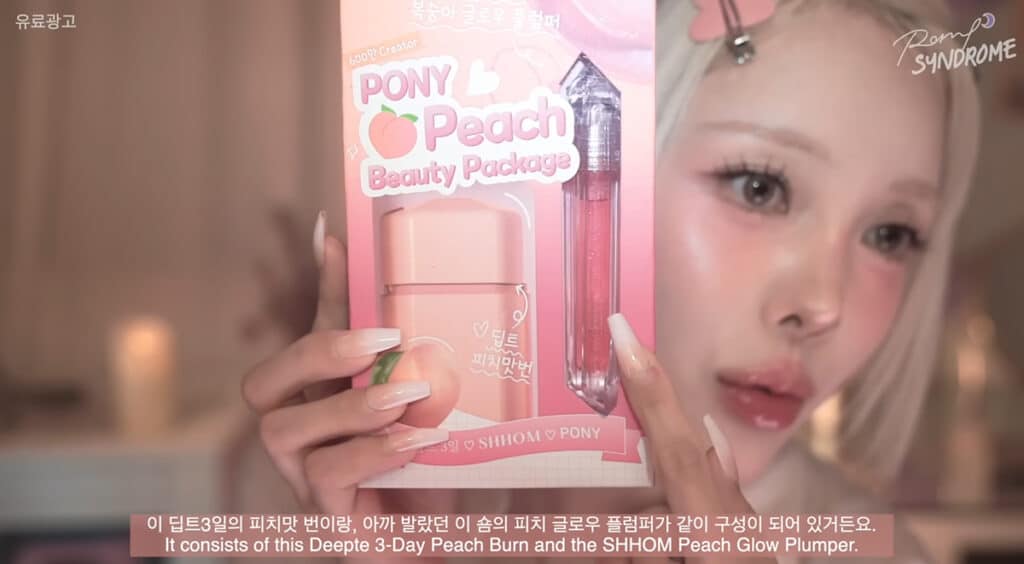
In the realm of Korean pop culture, influencers and Key Opinion Leaders (KOLs) hold considerable sway. Celebrity endorsements can significantly boost a product’s popularity and reach. Moreover, collaborating with Korean beauty influencers can help promote their products effectively and organically, expanding their marketing reach.
Harnessing the Power of Social Media Platforms
South Korea’s beauty industry has capitalized on the rise of K-beauty and the power of social media platforms. Instagram, Facebook, Naver Cafe, and Kakao Moment provide ample opportunities for brands to engage with, educate, and entertain their target audience. Through these platforms, brands can showcase their products online, share customer testimonials, and run promotional campaigns.
Live Streaming and Videos
The use of live streaming and videos is rapidly growing in the Korean cosmetic industry. Platforms like YouTube and Instagram Reels allow Korean brands to demonstrate their skincare and beauty products in action, offering tutorials, reviews, and live interactions with users.
E-Commerce Marketing
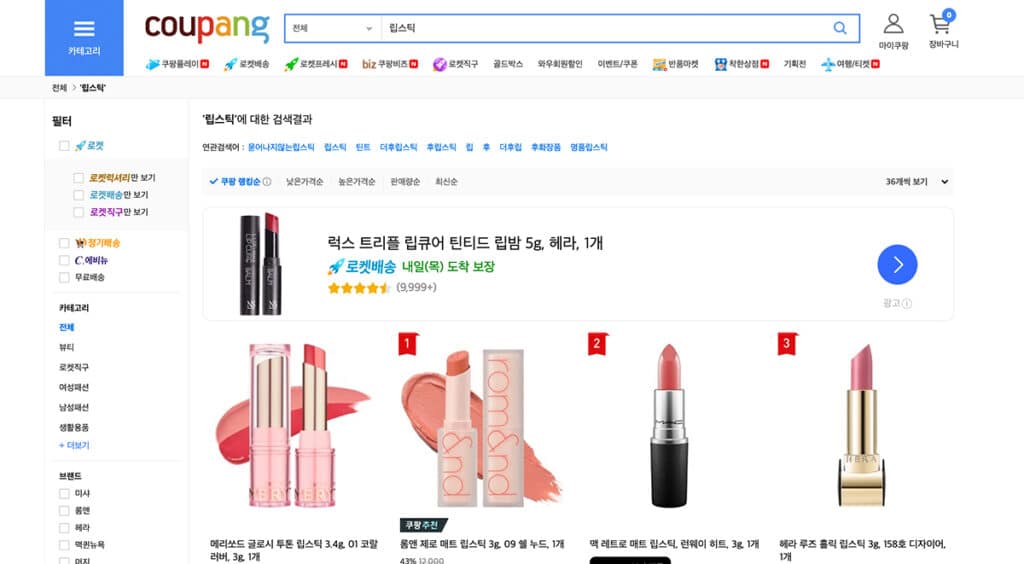
The final piece of the digital marketing puzzle for cosmetic brands in South Korea is e-commerce marketing. Platforms like Coupang, Gmarket, and 11st are popular among South Korean consumers for purchasing products online. Brands should optimize their product listings on these platforms, offering detailed descriptions, clear images, and attractive promotions to entice potential customers.
Choose the Right Marketing Agency
For a successful entry into the South Korean market, forming an alliance with a marketing agency that fully comprehends the distinctive requirements and subtleties of this dynamic region is crucial. This is where Inquivix comes into play. Inquivix provides a complete suite of digital marketing services, meticulously designed for the South Korean demographic. We encompass everything from SEO and social media marketing to influencer marketing, PPC advertising, and e-commerce marketing to ensure your brand thrives.

Language obstacles can often be a formidable hurdle when attempting to market in a foreign domain. At Inquivix, we employ a team of proficient communicators fluent in Korean, primed to design and deploy effective marketing strategies that resonate with your target market. Our extensive experience leading digital marketing campaigns in South Korea furnishes us with an advantage, supplying valuable insights into what strategies are impactful and which ones fall short.
Recognizing the most fitting platform grounded on your product and audience is vital, and it’s an area where we shine. We assist you in making data-driven decisions to identify the platforms where your prospective customers are most engaged, ensuring your products acquire the visibility they require. By choosing Inquivix, you’re not just opting for a marketing agency; you’re selecting a committed partner intent on elevating your brand’s standing in the South Korean market.
Navigating the K-Beauty Digital Landscape: Final Thoughts

In the dynamic sphere of the South Korean skincare market, mastering varied digital marketing strategies is integral for brands to make a substantial impact. From understanding consumer behavior and harnessing the power of influencers to leveraging SEO, PPC advertising, and e-commerce marketing, each approach plays a significant role in a brand’s success story. As we move ahead, the digital landscape will only continue to evolve, bringing new opportunities and challenges. Brands that stay adaptable, innovative, and customer-focused will lead in the K-beauty revolution. With a reliable partner like Inquivix, navigating this exciting yet complex journey becomes an exploration worth pursuing.
FAQs
Being familiar with the primary advertising channels in South Korea can significantly assist businesses in effectively reaching their targeted audience. The landscape of South Korean advertising is vast and diverse, incorporating several channels. Some of the most prominent of these are television and print media, which continue to hold substantial influence in the market.
In the digital realm, online advertising has become a vital part of the overall media mix. This space comprises several forms which include display ads, search ads, and social media ads. Display and search ads are key elements in reaching active internet users, while social media ads offer the advantage of a more targeted approach, allowing businesses to reach specific demographic segments based on a variety of factors. Together, these platforms form a comprehensive advertising network that businesses can tap into for effective market penetration in South Korea
The social media landscape in South Korea is diverse and unique, hosting a mix of both international and homegrown platforms. While globally popular platforms like Instagram, TikTok, and Facebook have made their mark, several locally developed platforms also command a significant user base in the country.
Among these domestic services, KakaoTalk stands out, boasting an impressive 47.64 million monthly active users. It’s worth noting that despite its relatively low profile internationally, KakaoTalk is the most heavily used social media platform in South Korea, with over 87% of the population relying on it. This distinctiveness sets the South Korean social media scene apart, providing businesses with unique opportunities for targeting and engagement.
